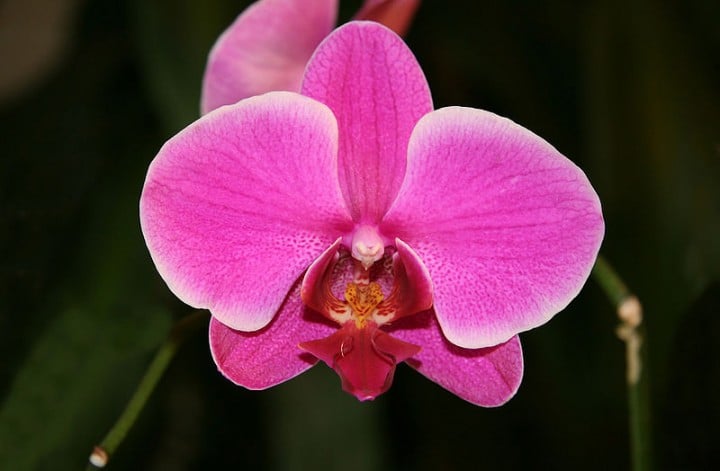
You might have read my article about growing orchids on windowsills in the winter issue of Garden Making. I keep a few moth orchids (Phalaenopsis spp. and cvs.) in a small bay window with northwest exposure. It’s a cool spot that doesn’t receive any direct sunlight, but does have bright, reflected light from the sky. When plants are out of bloom and the bark growing medium has sunk down an inch or more, it’s time for a new pot and fresh mix. A growing medium for orchids should help anchor the roots and be free draining, allowing water to run through the pot. The mix materials must also absorb enough moisture and nutrients to feed the roots and hydrate the plant, and have open spaces for air to circulate.
There are as many opinions on orchid mixes as there are cake recipes, so I’ll tell you about mine. I try to make a mix that wild orchids might encounter growing in a shady jungle. (If the plant came from an orchid mill, and was grown in a glass flask, I can only hope the poor thing has genetic memory of happier habitats.) An orchid growing in the wild would have more than one material to sink roots into—there would be supportive tree bark, fibrous leaf duff accumulating from surrounding foliage, and spongy bits of moss in bark crevices. My current mix for repotting orchids is made up of medium-size pieces of cedar bark and coconut husk chunks (sold together in a pre-mixed bag). I measure out the amount needed and then lightly pound the largest pieces with a hammer to break them down just a little and increase their porosity, being careful not to make small pieces that might impede air and water movement. (Large-size bark chips are too big for roots to get around, and cause stress to the plant.) Wine corks are a soft form of tree bark; I cut up a few into two or three pieces with sharp secateurs and throw some into the mix. Finally, I add a small amount of sphagnum moss threads or large-size vermiculite to help maintain humidity in the root zone.
Bark that has been sealed in a bag for months is often so dry that it will shed water. It’s crucial to soak the mix in hot tap water for an hour to reactivate its porosity, and then drain it thoroughly before potting up the orchid. I use five-inch (13-cm) plastic orchid pots (available at leevalleytools.ca) with open slits on the sides for air circulation, and large drainage holes in the bottom.
How to repot orchids
Repotting the orchid is straightforward. Tap it gently out of its pot. Use a pencil to gently remove and comb out the old bark mix, and examine the roots. Cut away root parts that are obviously decayed, or are dark brown and collapsed. Healthy roots are grey, green or beige. Some healthy roots may be damaged, with the outer root covering (the velamen) broken open or separated. If the stringy thread inside the actual root is still connecting the pieces, it will continue to be useful and should be left. Put the trimmed root mass into the empty new pot and hold the plant in place. Some of the roots may hang over the side, and that’s okay. Begin sliding new bark mix down the sides and into the root ball, until the roots are filled with bark mix and the plant can be settled in place. (I don’t use Styrofoam chips or crockery pieces in the bottom, preferring to leave more room for the roots.) And that’s it!


Intersting article.
To Erica, March 16
Real corks are getting harder to find with the increased use of screw cap sealers on wine bottles. Ask your friends to save them for you. Cork is a bark product, so an appropriate material for orchid roots. (The corks are processed to remove pathogens before sealing wine bottles.) Last month I fertilized my windowsill orchids, adding some Epsom salts into the water. Now two have sprouted new shoots with buds off older flower scapes still carrying flowers. I think it worked!
Thanks for the great info on repotting orchids! Love the tip about wine corks–useful, fun, recycling is great. I love the magazine for its text-heavy, info-heavy articles–actual, informed reporting instead of pure plant porn. The website articles here extend this really nicely. I love that there's finally a great magazine for my region (I'm in northern Wisconsin). My small collection of orchids makes getting through the long winters bearable– I even throw a "Black Orchid" cocktail party every March, when they're at peak bloom in my house. Thanks again!